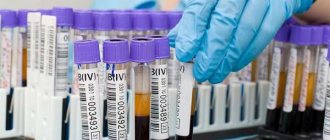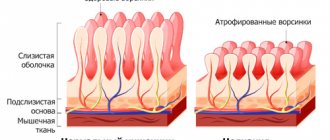Category: ENT + pulmonology
One of the most common ENT diseases in adults is sinusitis. This term is a general name for all inflammatory processes in the mucous structure covering the paranasal sinuses (one or more).
A certain localization of the inflammatory process gives its name to various diseases, one of which is ethmoiditis. What it is? This is a pathological inflammatory process that develops in the mucous membrane of the ethmoid labyrinth.
- Let's consider what the labyrinth is, why its mucous membrane becomes inflamed, how it manifests itself and is treated.
The tasks of the ethmoid labyrinth are due to protective functions - to prevent infection (through inhalation) from entering the brain, and to warm cold air before entering the respiratory system. Along with other sinuses, it participates in the formation of voice timbre.
The ethmoid labyrinth is represented by paired bone formations of a hollow structure, in the form of hollow air cells dotting the bone. It is located between the cranial and nasal cavities, in the area of the anterior part of the cranial vault, represented by the frontal bone. A thin bone septum separates the labyrinth from the eye sockets and nose. The internal cavity of the air-bearing cavernous cells is lined with mucous epithelium. It is he who is susceptible to inflammation, which forms the disease ethmoiditis.
Proximity to the ducts of other sinuses creates a risk of spread of the inflammatory process, localized in the mucous lining of the cavity formations in the ethmoid bone, to the mucous membrane of the maxillary (maxillary) sinuses, causing sinusitis, or to the mucous lining of the frontal sinus, manifesting as frontal sinusitis. That is why ethmoiditis is often accompanied by these diseases.
The genesis of development is due to the influence of various infections caused by coccal and fungal representatives of pathogenic flora, adenoviruses and influenza viral strains. Sometimes the cause of ethmoiditis is: a consequence of chronic rhinitis, or chronic inflammation of the mucous lining of the frontal or maxillary sinuses.
A predisposing factor for the development of ethmoiditis can be: failure of the protective factor of immunity and inconsistency of the anatomical structure, in the form of anomalies of the nasal outlets and its middle passage, expressed by their excessive narrowness. This is manifested by difficult or complete cessation of mucous outflow from the nasal sinuses, even with slightly pronounced swelling of the mucous membranes.
Classification of ethmoiditis
By the nature of development:
- spicy,
- chronic.
According to the location of the pathological focus:
- unilateral - depending on the location of the pathological process, signs of the disease appear on the right and left sides.
- bilateral - the symptoms of the disease manifest themselves in two sinuses,
The nature and intensity of symptoms correspond to the nature of the disease.
Taking into account the peculiarities of the course of the disease, three forms of ethmoiditis are distinguished::
- catarrhal,
- polyposis,
- purulent.
Catarrhal ethmoiditis
The main causes of development are viruses. A distinctive feature of this form of pathology is lacrimation. Initial symptoms are headache, a feeling of weakness, dizziness, and nausea. The capillaries in the eyes burst, so the whites take on a red tint, the bridge of the nose swells, and the sense of smell is impaired.
Polypous ethmoiditis
This form of pathology is chronic and manifests itself against the background of a prolonged runny nose, which has not been treated. In this case, polyps form in the nasal sinuses, which cause swelling. Patients experience periods of remission when the symptoms of polyposis ethmoiditis completely disappear.
Purulent ethmoiditis
This form of pathology is called the most dangerous, it manifests itself with acute symptoms - fever up to +40 degrees, severe headache spreading to the forehead, bridge of the nose and eyes. Signs of severe intoxication appear:
- heat,
- pain in muscles and joints,
- nausea and diarrhea,
- fatigue,
- dysfunction of the gastrointestinal tract.
Causes of ethmoiditis
Most often, pathological processes develop after infection of the body with viruses of the cocci and fungi group. Sometimes laboratory tests reveal several causative agents of the disease.
The disease, as a rule, progresses against the background of pathologies of an infectious nature of the ENT organs. The infection process occurs hematogenously, that is, viruses enter the ethmoid sinus through the bloodstream. Contact infection occurs much less frequently.
Factors that predispose to the development of the disease:
- adenoids,
- anatomically incorrect structure of the nasopharynx,
- facial injuries in the nose area,
- allergic nasopharyngeal diseases,
- infectious processes in the nasopharynx that occur in a chronic form.
It is important! Pathological processes in sinusitis without proper treatment spread to the bone and lead to its destruction. As a result, abscesses and empyema appear. If you do not consult a specialist in a timely manner, pus affects the area of the eye sockets and brain.
Symptoms of the disease
Symptoms of acute ethmoiditis
Signs of acute ethmoiditis progress against the background of a common runny nose or flu. Inflammatory foci present in the adjacent sinuses provoke damage to the sinus (ethmoid labyrinth). Characteristic signs of the acute form:
- headache concentrated at the bridge of the nose,
- difficulty breathing and yellowish-green discharge,
- impaired sense of smell,
- heat,
- weakness, constant feeling of fatigue,
- The skin around the eyes becomes more sensitive.
Primary and secondary acute ethmoiditis manifest themselves differently. The primary form of the disease is more easily tolerated by the patient. The secondary form is more severe, symptoms appear quickly and progress. Complications develop already on the second day of illness.
It is important! If the attending physician does not promptly prescribe treatment for ethmoiditis occurring in the acute phase, multiple pathological foci will form, and osteomyelitis is possible.
Signs of chronic pathology
A chronic disease is a consequence of an acute pathology. Patients at risk are:
- with reduced immunity,
- those who have not completed treatment for the acute form of the pathology,
- with chronic inflammation located in the adjacent sinuses.
The symptoms of the disease are determined by the intensity of the inflammatory process.
During remission:
- Pain in the bridge of the nose rarely occurs,
- scanty nasal discharge,
- In the morning a small amount of discharge accumulates in the nose,
- During the examination, polypous growths are revealed.
During the period of exacerbation, the patient develops weakness, fatigue, and symptoms characteristic of acute ethmoiditis.
Important! This pathological form is dangerous due to degenerative processes. With a large accumulation of polyps, polyposis develops - formations fill the nasal cavity, which leads to deformation of the nasal septum.
General symptoms
- Headache.
- Swelling of the eyelids, worse in the morning.
- Runny nose lasting longer than ten days.
- Discharge of mucus from the nose.
- Heat.
- Fast fatiguability.
- Distortion of the sense of smell and taste.
It is important! Pathological processes in ethmoiditis occur near the eye sockets, so possible complications can affect vision, cause double vision, and redness of the eyelids.
Ethmoiditis in a child: main symptoms in children and methods of treating the disease
By the time of birth, the ethmoid cells have already been formed in the child, but the frontal sinus appears after the mucous membrane has grown into the frontal bone and the spongy substance has resolved. This usually occurs before the age of three. Therefore, in a newborn baby and up to the age of three, ethmoiditis occurs in isolation. After three years, the disease can spread to the frontal sinus. Sometimes all cells can become inflamed, but most often either the front or back group of cells become inflamed. Inflammation of ethmoid bone cells can be diagnosed in newborns after a few days from birth.
Children do not tolerate this disease well; it is especially necessary to control body temperature at this moment.
In older children and adults, the disease often spreads to other paranasal sinuses, as a result of which sinusitis or sinusitis may additionally develop. In these cases, the doctor diagnoses frontoethmoiditis or maxillary ethmoiditis.
The main symptoms of ethmoiditis in a child are:
- Bad feeling;
- Fever;
- Swelling of the upper eyelid;
- The eye cannot close completely;
- The eyeball moves forward and outward;
- Feeling of pain on the forehead and jaw area when pressing;
- The bridge of the nose hurts very much;
- Vomiting and stomach upset.
In children aged 5 years and older, the upper eyelid does not swell as much, but the pain is just as severe. In addition, the sense of smell may disappear. To make a diagnosis, the child needs to have a rhinoscopy and x-ray.
The disease can be open or latent. The main symptoms in children of open ethmoiditis are nasal discharge. With closed forms, there is pain in the corner of the eye and swelling of the eyelid. Radiography plays an important role in prescribing treatment.
Acute anterior ethmoiditis in young children usually occurs in a benign form. In adolescence, acute ethmoiditis can already develop into chronic and lead to the formation of polyps if treatment is not started in time. Sinuforte is often used to treat children, which is gentle and does not injure the child’s body.
Diagnostics
Only an otolaryngologist can confirm or refute the diagnosis. The specialist examines the oral and nasal cavities, is interested in the symptoms of the disease and the course of respiratory pathologies. The final diagnosis is made only on the basis of laboratory tests and hardware diagnostics.
To confirm the diagnosis of ethmoiditis, the ENT doctor may prescribe some of the following procedures:
- A blood test is necessary to identify the inflammatory process and determine its intensity.
- Culture of mucus helps to identify the presence of pathogenic microflora and determine the degree of sensitivity to antibacterial drugs.
- An endoscopic examination is aimed at examining the paranasal sinuses, identifying the presence of polyps and other formations.
- X-ray examination is carried out in several projections, which reflect the affected areas of the paranasal sinuses and inflammatory processes.
- A computed tomogram is usually performed on young children if other diagnostic methods are not informative.
Treatment of ethmoiditis is prescribed based on the results of the examination. If the patient’s condition is satisfactory, the specialist prescribes bed rest, certain changes in diet and outlines a drug therapy regimen. If the examination reveals a large amount of pus and widespread infection, treatment of ethmoiditis will most likely be carried out in a hospital setting.
Forecast
In acute ethmoiditis, early detection of the disease and qualified medical care make it possible to achieve complete clinical recovery. Relapses are usually not observed.
In chronic cases, the prognosis is somewhat less optimistic. It is virtually impossible to achieve recovery, despite all the achievements of modern medicine. Doctors can only achieve stable remission, which does not exclude periodic exacerbations.
Plisov Vladimir, doctor, medical observer
2, total, today
( 67 votes, average: 4.21 out of 5)
How to get rid of tinnitus: causes and treatments for tinnitus
Effective medicines for sore throat: review of remedies
Related Posts
Treatment of ethmoiditis
Treatment of the pathology is complex and predominantly conservative. The following are prescribed as therapy:
- vasoconstrictor drugs,
- washing with medicinal solutions,
- physiotherapeutic measures,
- course of antibiotics.
In chronic and polypous forms of ethmoiditis, surgical intervention will most likely be required.
How to treat acute ethmoiditis - the use of vasoconstrictor drugs
Most often, conservative therapy is prescribed, however, such treatment is justified only in situations where there is no pus. The main goal of conservative treatment:
- restoration of nasal breathing,
- elimination of swelling and inflammation.
To treat acute pathology, medications are prescribed to ease breathing, anti-inflammatory drugs, where the active ingredient is ibuprofen. It is recommended to rinse your nose with medicinal solutions, and preferably sleep with your head elevated, using a high pillow.
The most traditional are vasoconstrictor drops, but they should be used for two to three days to eliminate the possibility of addiction.
- "Rinofluimucil" (280 rubles). The drug reduces the volume of discharge from the nasal cavity and eliminates swelling. The spray is usually prescribed in combination with Sinupret and Sinuforte drops (eliminate inflammation).
- "Nasonex" (500 rubles). The drug effectively eliminates congestion caused by allergic rhinitis. The advantage of the spray is that it can be used for several months without the body getting used to it, and can be combined with drugs that activate the outflow of mucus.
Medicines to stimulate mucus discharge:
- “Sinupret” (350 rubles) is presented in the form of dragees and drops. This is a herbal medicine created on the basis of medicinal herbs that eliminate swelling and activate the evacuation of mucus.
- “Sinuforte” (2,300 rubles) - nasal drops based on herbal ingredients that speed up the process of removing mucus and pus.
Washing - what solution to use?
Antiseptic solutions are used to rinse the nose. It is best to use a special device - a sinus catheter. During the procedure, the paranasal sinuses are cleaned and treated with medication. Rinsing is carried out until clear liquid begins to come out of the sinus.
Physiotherapeutic activities
Prescribed during the period of remission, when there are no signs of inflammation:
- electrophoresis using antibacterial drugs,
- phonophoresis,
- UHF.
Antibacterial therapy for ethmoiditis
Most often, antibiotics are prescribed for acute forms of pathology. Antibiotic treatment of chronic ethmoiditis makes sense when:
- a bacterial infection develops
- pus appears.
If there are indications for antibiotic therapy, Amoxicillin is prescribed in combination with Clavulanic acid. Augmentin and Amoxiclav are also used. If there is an allergy to drugs of the penicillin group, medications of the fluoroquinol group or macrolides are prescribed.
The course of therapy is designed for two weeks, but after five days the doctor evaluates the effectiveness and feasibility of treatment. If there is no improvement, you need to choose another drug.
It is important! To reduce pain, non-steroidal anti-inflammatory drugs with the active substance paracetamol or ibuprofen are prescribed. Additionally, vitamin complexes are prescribed to strengthen the immune system.
How to treat ethmoiditis of an allergic nature
If the pathology is caused by an allergen, first of all, it is necessary to exclude the patient’s contact with the cause of the disease. The specialist prescribes therapy with antihistamines and nasal sprays with anti-allergenic effects. Therapy with corticosteroids, anti-inflammatory medications, is used. The active ingredient of such drugs is a synthetic analogue of the human hormone - cortisol. If necessary, calcium supplements are prescribed.
It is important! The most commonly prescribed treatment is Nasonex spray.
Surgical therapy for chronic form
There are certain indications for the operation:
- exophthalmos - pathological displacement of the eyeball, most often forward (bulging eyes), less often - to the side,
- decreased visual acuity,
- poor mobility of the eyeball,
- intracranial complications.
First, intensive therapy is prescribed; if it does not produce results, surgery is performed.
There are two types of surgical intervention:
- endoscopic technique - manipulations are carried out from inside the nose,
- The surgeon makes an external incision near the corner of the eye.
During the operation, the specialist opens the cells of the ethmoid sinus.
Treatment of chronic polypous ethmoiditis involves surgical removal of polyps.
It is important! With a timely visit to an otolaryngologist and well-chosen therapy, unilateral and bilateral ethmoiditis can be completely cured. As a rule, the prognosis for ethmoiditis is favorable.
Traditional treatment of ethmoidal sinusitis
Therapeutic methods used to treat acute ethmoiditis imply the following goals:
- Cleansing the sinuses from pathogenic microflora and pathogens - viruses, infections, fungal bacilli.
- Removing purulent secretions from the maxillary sinuses.
- Restoring the normal functioning of the mucous membranes of the ethmoid labyrinth.
- Bringing normal breathing through the nose.
To obtain the best result and achieve all set goals, the patient is recommended the following procedures and treatment methods:
- A mandatory manifestation of the clinical picture of ethmoiditis is profuse rhinitis and nasal congestion. To successfully cleanse the maxillary sinuses of mucus and pus, it is necessary to restore normal access to them. Only in this case will the medicines be able to reach the very source of inflammation and neutralize it.
- Vasoconstrictor nasal drops (the most famous are naphthyzin and sanorin) will help open the ethmoid sinuses. These drugs restore free breathing through the nose within a few minutes after their use. It is necessary to instill the product 2-4 drops into each nasal passage up to several times a day.
- When the goal of opening the necessary sinuses has been achieved, you can begin to use antihistamines that relieve swelling and improve the functioning of the mucous membrane. Bioparox is most often used for this. This drug is the best among its analogues. It is also relevant if you suffer from symptoms of chronic ethmoiditis.
- In cases where the purulent secretion has an excessively dense consistency, the patient is prescribed medications to liquefy the purulent masses and remove it from the nasal canals as quickly as possible. An excellent remedy in this regard is ACC with a dosage of 600 mg. It must be taken one tablet once a day.
- Antibacterial treatment of ethmoiditis is advisable if the analysis shows the proliferation of pathogenic bacteria in the sinuses or an exacerbation of the disease has occurred. A doctor can prescribe an antibiotic even if the patient is suffering from unbearably strong symptoms of the disease. Augmentin or sumamed are usually prescribed for oral administration, and ceftriaxone for intramuscular administration. Before taking antibiotics, it is important to accurately determine the type of causative agent of the disease - the effectiveness of treatment directly depends on this.
- If the patient has been prescribed a course of antibiotic therapy, then treatment of ethmoiditis must be accompanied by means that protect the healthy intestinal microflora from the antibiotic. Digestion will not be affected if you take Linex or other probiotics.
- In some cases, patients who use antibiotics notice various manifestations of an allergic reaction. To prevent this condition, antihistamines are prescribed to the patient along with the antibiotic. Suprastin is very popular. It should be taken several times a day for a week.
Folk remedies
First of all, treatment with traditional recipes can only be started after consultation with an otolaryngologist. Many experts are against treating ethmoiditis at home, since the disease is dangerous due to its complications. If the doctor has approved the use of traditional methods, the treatment regimen is built on the principle of traditional treatment - the use of a vasoconstrictor, elimination of inflammation through rinsing, drops and inhalations.
Washing
- Soda, salt, tea tree oil. Dissolve 1 tsp in a glass of boiled water at room temperature. salt, a pinch of soda, a few drops of tea tree essential oil. The procedure is carried out three times a day using a syringe.
- Chamomile. Brew 1 tbsp in a glass of water for an hour. chamomile flowers. Strain the mixture and rinse your nose several times a day.
- Chlorophyllipt. A ready-made alcohol solution of chlorophyllipt can be purchased at a pharmacy. Dissolve a tablespoon of the product in two glasses of water. Wash your nose with the solution twice a day.
Inhalations
The procedure can be carried out in two ways: traditional (breathe healing vapors under a towel), using a nebulizer.
Recipes for decoctions for traditional inhalations.
- Pour 10 pieces of bay leaves with water, bring to a boil, reduce heat to low. Breathe in pairs for 5-10 minutes.
- Grind 3 cloves of garlic, add 100 ml of apple cider vinegar and a glass of boiling water. Carry out the procedure for a quarter of an hour three times a day,
- Pour 3 tbsp into two glasses of water. chamomile inflorescences, boil for 5-7 minutes, leave for 1.5-2 hours, bring to a boil again, add 5 drops of tea tree oil (can be replaced with eucalyptus oil). The duration of the procedure is 5-10 minutes, three times a day.
Drops
- Drops from cyclamen juice. This remedy is the most effective in the list of folk recipes. To prepare, you will need to rinse the plant tuber, grate it, and squeeze out the liquid. The resulting juice is diluted with water - 1 part juice, 4 parts water. Place two drops of the prepared product into each nostril. The procedure is carried out before bedtime, since heavy discharge begins after instillation.
- Kalanchoe is another effective folk remedy against infections that get into the nose and prevent free breathing. You will need to cut three large leaves and put them in a cool place for three days. Then the plant needs to be crushed and the juice squeezed out. Strain the liquid and add water in equal proportions. The product is instilled 2-3 drops into each nostril several times a day.
- Black radish juice drops are a fairly effective folk remedy for ethmoiditis. To prepare, you will need to wash the radish, chop it, squeeze the juice out of the pulp, strain and bury it in your nose three times a day, 3-4 drops in each nostril.
After the procedure, the nose should be massaged especially actively in the area of the appendages. Then you need to lie on your back so that the drops spread evenly in the nasal cavity. After instillation, you need to blow your nose.
When traditional medicine is ineffective
Most often, doctors do not recommend treatment with folk remedies, since such therapy, as a rule, turns out to be ineffective and leads to loss of time. In this case, the acute phase very quickly transforms into chronic ethmoiditis, the symptoms of which are especially difficult for the patient to tolerate. That is why it is important not to waste precious time and promptly identify the symptoms of ethmoiditis and receive adequate treatment. It is not recommended to self-medicate during an exacerbation of a chronic form of pathology.
Deterioration and examination
As a rule, there is damage to the ethmoid labyrinth, malfunction of the visual apparatus and damage to the intracranial localization (purulent meningitis, brain abscess and arachnoiditis).
It is important to understand that it is not possible to identify chronic ethmoiditis on your own, and accordingly, adequate treatment becomes unavailable. Therefore, you need to visit a doctor who will do everything necessary to get rid of the pathology. A qualified doctor will prescribe diagnostic measures to ensure the accuracy of disease determination
A qualified doctor will prescribe diagnostic measures to ensure accurate diagnosis of the disease.
These include:
- MRI and CT.
- Radiography.
- Rhinoscopy.
- Endoscopy.
At the same time, computed tomography provides the widest range of assessment of the patient’s condition, namely his ethmoid bone. Magnetic resonance imaging, in turn, determines sinusitis of fungal etiology. This diagnostic method is used for children because it does not produce ionizing radio emissions.
Ethmoiditis in adults is usually detected by radiography
In this case, the film will show the darkening of the cells of the important lattice labyrinth
Nutrition and lifestyle
For the entire period of treatment, doctors recommend adhering to a gentle regimen - more rest, if possible limiting communication with people, and eliminating physical activity.
Nutrition requires certain adjustments - the diet should be balanced and complete, but should not overload the stomach and cause a feeling of heaviness. If necessary, the doctor will prescribe a vitamin complex.
It is important! If you follow all the recommendations and the prescribed treatment regimen, improvement occurs after three to four days, and you can count on a complete recovery in 7-10 days. If the disease was accompanied by complications, recovery will take 2 to 3 weeks.
Disease prevention. Recommendations
There is a small set of measures that must be taken to avoid the development of an acute form of ethmoiditis:
- It is necessary to promptly treat all diseases that may cause ethmoiditis.
- Eliminate bad habits.
- Monitor your immune system: eat right, enriching your diet with vegetables and fruits, engage in moderate physical activity, spend more time in the fresh air, and improve your sleep schedule. A healthy body will fight harmful microorganisms that penetrate it.
- Periodic consultation with an otolaryngologist, even if there are no clearly defined symptoms of the disease.
Complications
If treatment is not promptly done, the pus will spread to neighboring organs. This can cause complications that threaten the patient's life:
- complications related to vision and eyes,
- destruction of the latticed labyrinth,
- inflammation of intracranial areas, pia mater.
It is important! The chronic form of the pathology is dangerous due to the absence of symptoms; if signs of ethmoiditis appear, it is important to consult a doctor without wasting time. Inattention to inflammation will lead to irreversible pathological processes.












